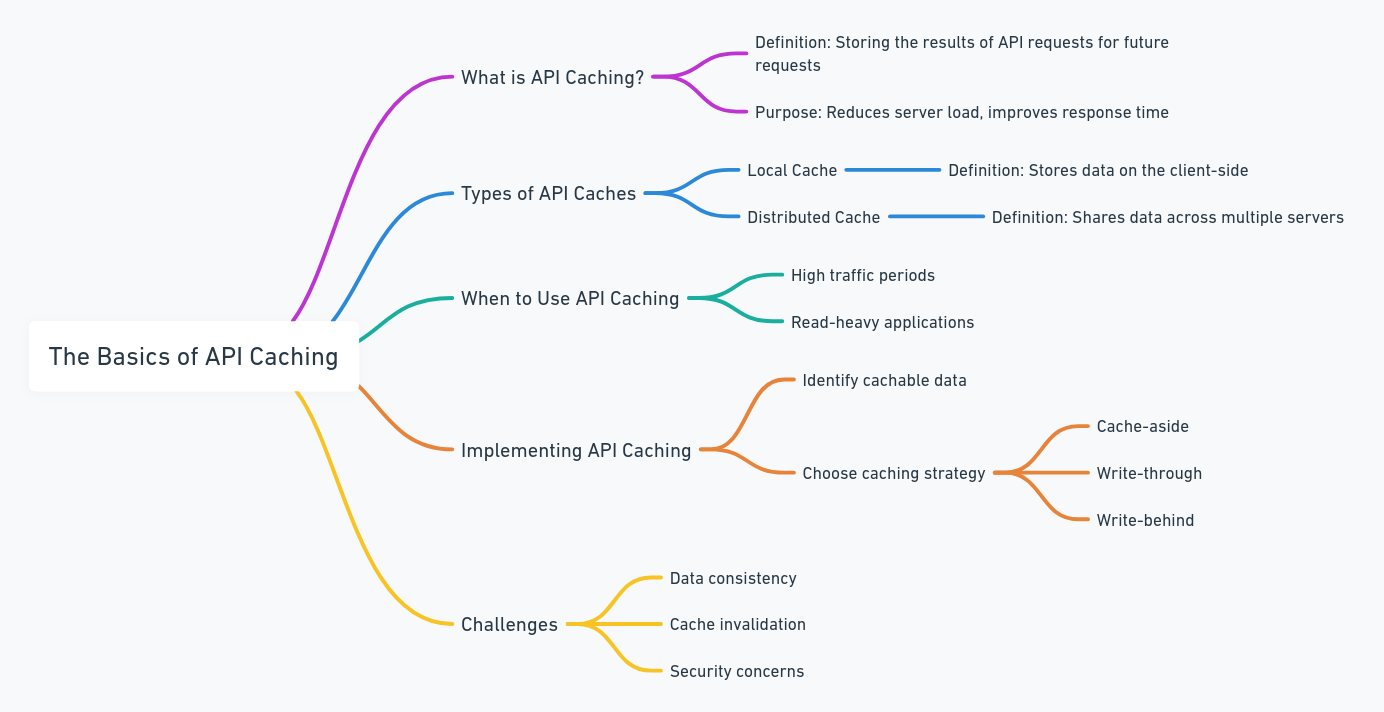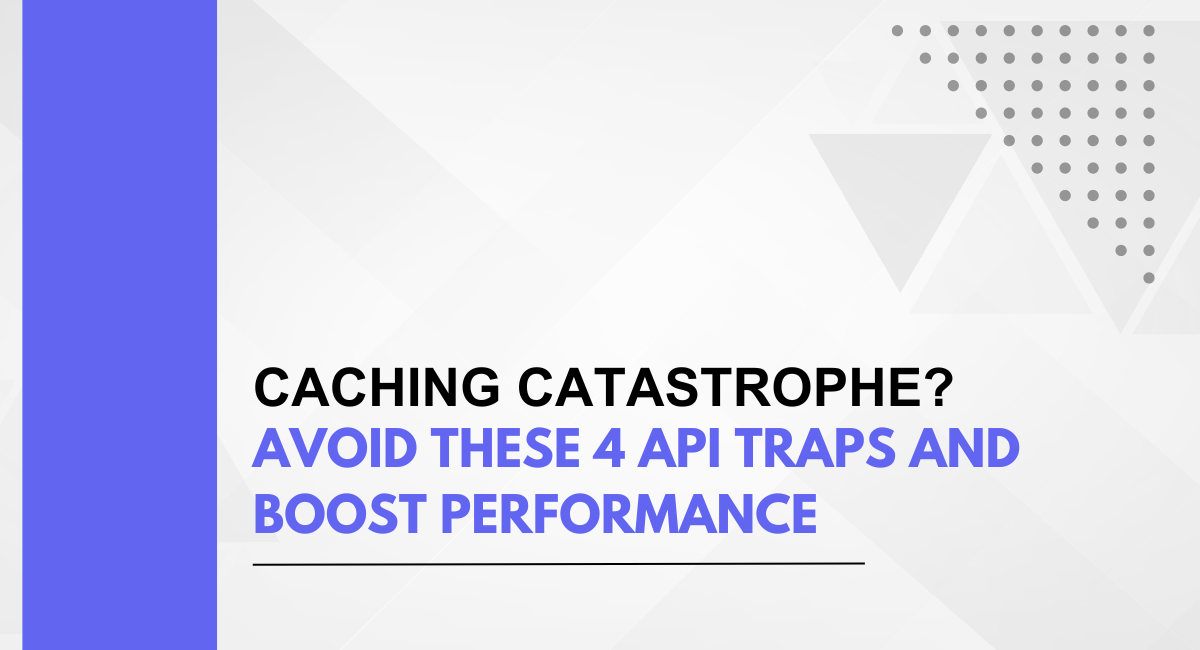Application Programming Interfaces (APIs) play a pivotal role in enabling seamless communication and integration between different software applications. APIs define the protocols and tools for building software, allowing applications to interact with each other and share data and functionality.
This level of interoperability has become essential for the creation of feature-rich, interconnected software ecosystems. APIs empower developers to leverage existing services and functionalities, reducing the need to reinvent the wheel for every project.
This not only accelerates development processes but also promotes consistency and standardization across various applications. As a result, APIs have become the building blocks of modern software, facilitating innovation and collaboration in the development community.
The Basics of API Caching

A. Definition and purpose of caching in the context of APIs
Caching in the context of APIs refers to the process of temporarily storing copies of frequently accessed data or responses to API calls. The primary purpose of caching is to improve the efficiency and performance of API-driven applications by reducing the need to repeatedly request and process the same data.
Instead of generating a response from scratch each time, cached data can be quickly retrieved, resulting in faster response times and a more responsive user experience.
Caching is particularly beneficial for static or infrequently changing data that remains consistent across multiple requests. By avoiding redundant computations and database queries, caching optimizes resource utilization and minimizes the strain on both the API server and the network.
B. How caching improves response times and reduces server load
Faster Response Times:
Caching significantly accelerates response times by eliminating the need to regenerate responses for identical or similar API requests. When a client makes a request, the server can check if a cached copy of the response exists.
If so, the server can promptly return the cached data, bypassing the time-consuming process of reprocessing the request. This leads to quicker delivery of information to the end-user.
Reduced Server Load:
Caching helps distribute the load on the server by minimizing the number of requests that reach the backend. With cached responses readily available, the server experiences lower processing overhead and reduced demand on its resources.
This not only enhances the overall performance of the server but also enables it to handle a larger volume of requests without a proportional increase in computational costs.
C. Different types of caching mechanisms
Server-Side Caching:
This involves storing cached data on the server side, typically within the application's infrastructure. Server-side caching can occur at various levels, such as full-page caching, where entire HTML pages are cached, or partial caching, where specific API responses or database query results are cached. Popular tools for server-side caching include Redis, Memcached, and various HTTP caching mechanisms.
Client-Side Caching:
In client-side caching, the cached data is stored on the user's device or browser. This approach is suitable for scenarios where the same data is reused across multiple sessions or page visits. Web browsers often implement client-side caching by using HTTP headers like "Cache-Control" and "Expires" to instruct the browser on how long it can keep a cached copy before requesting a fresh one.
Content Delivery Network (CDN) Caching:
CDNs are a distributed network of servers strategically placed around the world to deliver content closer to end-users. CDNs cache static assets, such as images, stylesheets, and API responses, at various server locations. This reduces latency and accelerates content delivery by serving cached data from a server geographically closer to the user.
Common API Caching Pitfalls
The importance of keeping cached data up-to-date
While caching significantly improves API performance, one common pitfall is overlooking the importance of cache invalidation. Cached data becomes stale over time, and if not updated promptly, it can lead to inaccuracies and inconsistencies in the application.
Keeping cached data up-to-date is crucial to ensure that users receive the latest and most accurate information from the API. For dynamic or frequently changing data, relying on outdated cached responses can result in a suboptimal user experience and potentially cause errors.
Developers must strike a balance between caching for performance and ensuring the freshness of data to maintain the integrity of the application.
Strategies for effective cache invalidation
Time-based Expiration:
Set a time limit for how long cached data is considered valid. This approach involves defining a time-to-live (TTL) for cached entries, after which the data is considered expired. While simple, time-based expiration may not be suitable for all scenarios, especially when data changes do not follow a predictable schedule.
Event-driven Invalidation:
Implement cache invalidation triggers based on specific events that signify changes to the underlying data. Events could include data updates, inserts, or deletes. By associating cache entries with relevant events, developers can ensure that the cache is invalidated in response to changes, maintaining synchronization between the cached data and the actual data source.
Manual Invalidation:
Provide an administrative interface or API endpoint to manually invalidate specific cache entries when necessary. This approach allows developers or administrators to intervene and update the cache in response to changes that may not be automatically detected through time-based or event-driven strategies.
Versioned Caching:
Incorporate versioning into cached data to distinguish between different versions of the same resource. When an update occurs, the version identifier changes, prompting clients to request the latest version of the data. This approach helps in maintaining multiple versions of cached resources and enables a smoother transition when introducing breaking changes.
Smart Key Design:
Structure cache keys intelligently to reflect dependencies and relationships between different data entities. A well-designed cache key can facilitate more granular invalidation, ensuring that only relevant portions of the cache are invalidated when specific data changes.
Best Practices for Optimizing API Caching
A. Utilizing Content Delivery Networks (CDNs)
Content Delivery Networks (CDNs) play a crucial role in optimizing API caching by leveraging a distributed network of servers strategically positioned around the globe. CDNs enhance API performance through the following mechanisms:
- Geographical Proximity: CDNs place cached copies of API responses on servers located in various geographical regions. When a user makes a request, the CDN serves the cached content from a server that is physically closer to the user. This minimizes latency and accelerates the delivery of API responses.
- Load Balancing: CDNs distribute incoming requests across multiple servers, balancing the load and preventing any single server from becoming a bottleneck. This helps in handling a larger volume of requests and ensures optimal performance during traffic spikes.
- Caching Static Assets: CDNs are adept at caching static assets, such as images, stylesheets, and API responses. By storing these resources closer to end-users, CDNs reduce the need for requests to reach the origin server, resulting in faster response times.
- Reducing Bandwidth Usage: CDNs can compress and optimize content before delivering it to end-users. This not only improves response times but also reduces the overall bandwidth usage, leading to cost savings for both API providers and consumers.
Choosing the right CDN is crucial for maximizing the benefits of distributed caching. Consider the following factors when selecting a CDN for API optimization:
- Geographical Coverage: Assess the CDN's global network and ensure it has servers strategically located in regions relevant to your user base. A CDN with extensive coverage helps deliver cached content with low latency worldwide.
- Performance Metrics: Evaluate the CDN's performance metrics, such as response times, uptime, and reliability. Look for a CDN that can consistently deliver low-latency responses to enhance the overall user experience.
- Security Features: Ensure that the CDN offers robust security features, such as DDoS protection, SSL/TLS encryption, and secure content delivery. Security is paramount, especially when handling sensitive data through APIs.
- Scalability: Choose a CDN that can scale horizontally to handle increased traffic and adapt to the evolving needs of your API. Scalability is essential to maintain optimal performance during periods of high demand.
- Integration Capabilities: Consider the ease of integration with your existing infrastructure and API architecture. A CDN that seamlessly integrates with your technology stack simplifies the implementation process.
- Cost Structure: Evaluate the pricing model of the CDN to understand how costs scale with usage. Consider any additional features or services that may incur extra charges and ensure that the chosen CDN aligns with your budget constraints.
By carefully selecting and configuring a CDN, API providers can take advantage of distributed caching to optimize performance, reduce latency, and enhance the overall reliability of their APIs. Utilizing a CDN is a best practice for achieving global reach and delivering fast, consistent API responses to users around the world.
Case Studies of API caching
A. Real-world examples of API caching successes and failures
Success: Twitter API
Overview: Twitter or X, a popular social media platform, successfully implements caching to enhance the performance of its API. By caching frequently accessed user profiles, tweets, and timelines, Twitter reduces server load and accelerates response times for millions of users.
Benefits: Improved user experience with faster load times, reduced strain on backend servers, and efficient handling of high traffic periods.
Failure: Facebook API Photo Thumbnails
Overview: Facebook faced a notable caching-related issue when users reported outdated photo thumbnails persisting even after photo updates. The caching mechanism in place did not effectively handle image changes, leading to a discrepancy between the displayed thumbnails and the actual images.
Consequences: Users experienced confusion and frustration due to inaccurate representations of photos, highlighting the importance of effective cache invalidation.
B. Lessons learned from notable instances of caching-related issues
Lesson: Comprehensive Cache Invalidation is Critical
Example: The Facebook API thumbnail issue underscores the importance of comprehensive cache invalidation. In this case, the caching system failed to recognize changes to images, resulting in outdated thumbnails persisting for users.
Takeaway: Developers should implement robust cache invalidation strategies that consider various scenarios, including updates, inserts, and deletes. Event-driven invalidation and smart key design can help prevent discrepancies between cached data and the actual state of the application.
Lesson: Balancing Freshness and Performance
Example: In instances where caching strategies prioritize performance over data freshness, there may be challenges in delivering real-time or rapidly changing information. Striking the right balance between performance gains and data accuracy is crucial.
Takeaway: Developers must carefully consider the nature of their data and choose caching strategies that align with user expectations. Time-based expiration may be suitable for some scenarios, while event-driven invalidation is essential for others, depending on the application's requirements.
Lesson: CDN Selection and Configuration Matters
Example: Companies that rely on CDNs for distributed caching should choose providers that align with their specific needs. Inadequate CDN selection or misconfiguration can lead to suboptimal performance.
Takeaway: Prioritize factors such as geographical coverage, performance metrics, security features, and scalability when selecting a CDN. Thoroughly test and configure the CDN to ensure it effectively serves the application's caching requirements.
API Caching
Effective API caching is paramount in modern software development, playing a pivotal role in enhancing the performance and user experience of applications. APIs serve as the backbone of interconnected systems, and their efficient operation is crucial for delivering timely and responsive services.
Caching, when implemented thoughtfully, significantly improves response times, reduces server load, and contributes to overall application reliability.
You may also be interested in: Automated Testing Solutions: Reduce Backlogs Efficiently
Book a Demo and experience ContextQA testing tool in action with a complimentary, no-obligation session tailored to your business needs.
We make it easy to get started with ContextQA tool: Start Free Trial.
